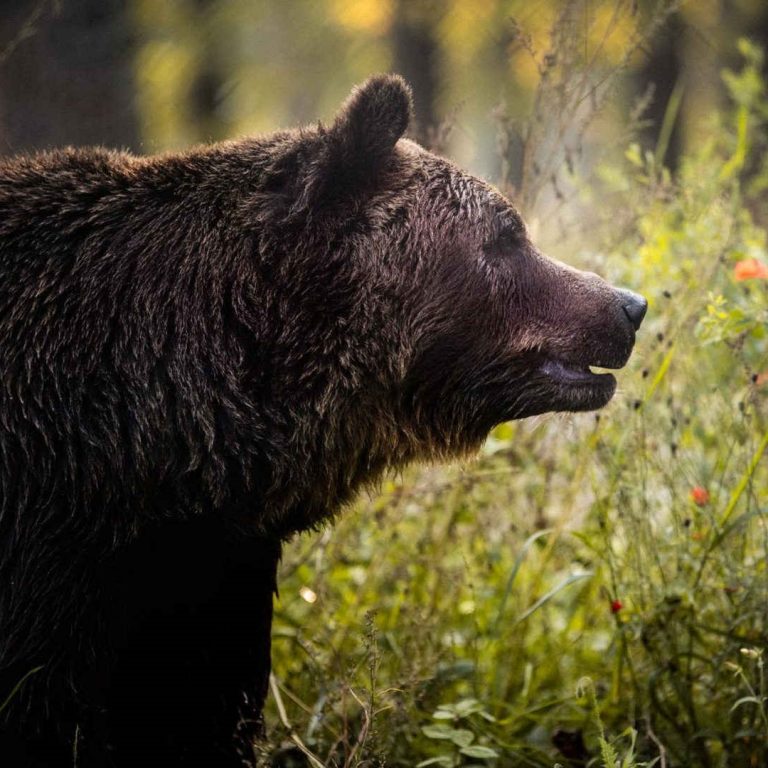There is a huge problem with animals kept in terrible conditions in circuses, private zoos, sometimes even at gas stations. There are nearly 200 species living in the wild and almost the same amount who are held in captivity. Numerous campaigns are conducted in the world aimed at protecting bears from human cruelty. Among the most popular methods are the creation of bear shelters. “Domazhyr” near Lviv is one of them.
Bear shelter “Domazhyr” is a situated on the territory of the Roztochchia Biosphere Reserve — hilly ridge, extended from Lviv to Tomaszów in Poland. The watershed between the Baltic Sea and the Black Sea runs here, so the land is rich for unique biodiversity. The place was chosen by the Austrian animal welfare charity fund — “Four Paws”. Together with the local government, they established a rehab centre for bears, who had suffered from human activity.
Creation of the shelter
Bear shelters can be found in the USA, Canada, even in tropical countries like Malaysia or Indonesia (they protect endangered Malayan sun bears). A bear shelter is a big forest area, surrounded with a protective fence, where bears rescued from frightful conditions may spend the rest of their lives in natural environment. Here they swim in water pools, climb trees, and run through woods, mostly they do it for the first time in their lives.
The idea of “Domazhyr” appeared in 2012 and acquired a physical appearance in May 2016 when the construction began. Ihor Nykolyn, a director of the rehab centre, recalls how it was:
— The first stone was laid down in a reception building, or “welcome zone” as we call it. It is a starting point for excursions, wherefrom visitors go observing our nurslings. The bears in “Domazhyr” live in the middle of the forest — in the conditions that we made close to natural ones. Those animals who have been in captivity cannot be fully recovered. They will never come back to wild nature. Ukraine has a problem with keeping brown bears, which are included in the Red List.

Local bears have a miserable history: someone was brought from a mobile zoo or circus after a ban on such kind of entertainment in Ukraine, someone was successfully rescued by us from a hounding station or hunting zone. By organizing excursions in “Domazhyr”, we hope to teach visitors a responsible attitude towards wildlife, to show life in harmony with wild animals. One of the important aims of the project activity, therefore, is an eco-educational approach.
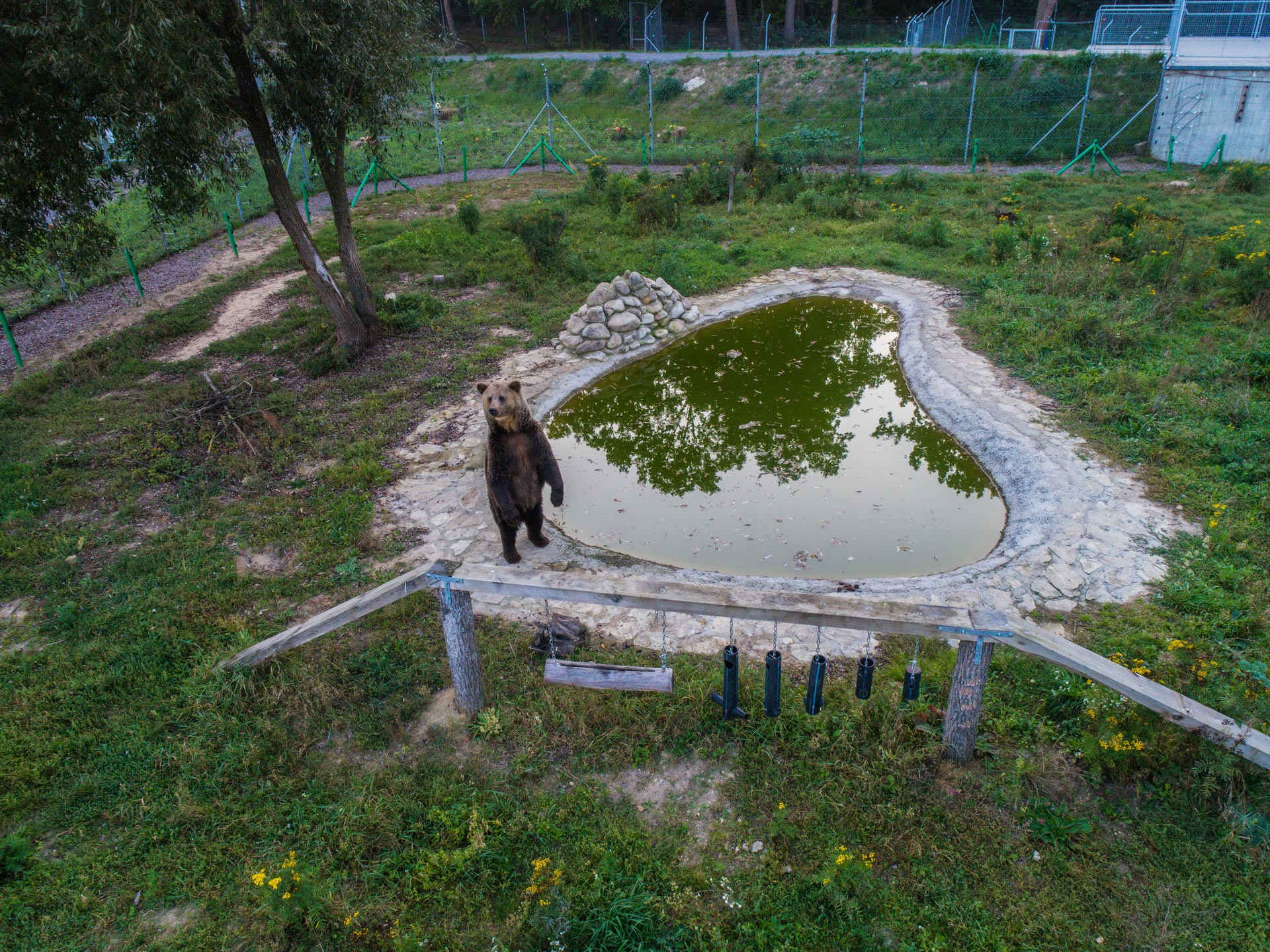
Accommodation for the nurslings
The territory of the shelter occupies nearly 8 hectares so far, where 7 enclosures with all bear infrastructure (like toys for the development of natural skills or pond for swimming) are placed. According to the “Four Paws” security standards, rehab centre is demarcated from the forest by a dual electrified fence. The animals have no reasons to escape, nevertheless, it is necessary to make ourselves secure in case of expressing their explorative nature: bears tend to get around a big territory searching for food, and their paws are adapted to dig out the ground. Ihor shares his observations:
— In terms of development, bears are extremely intelligent animals. They recognize our voices, they respond and, as a rule, they are very active, especially in summertime, mornings and evenings. In the middle of the day, bears may be sleeping; we cannot even guarantee our visitors that they will see all of them. The territory is pretty large, so bears can easily hide in their safe places. We also constructed bear dens, thus we hope they will sleep this winter.
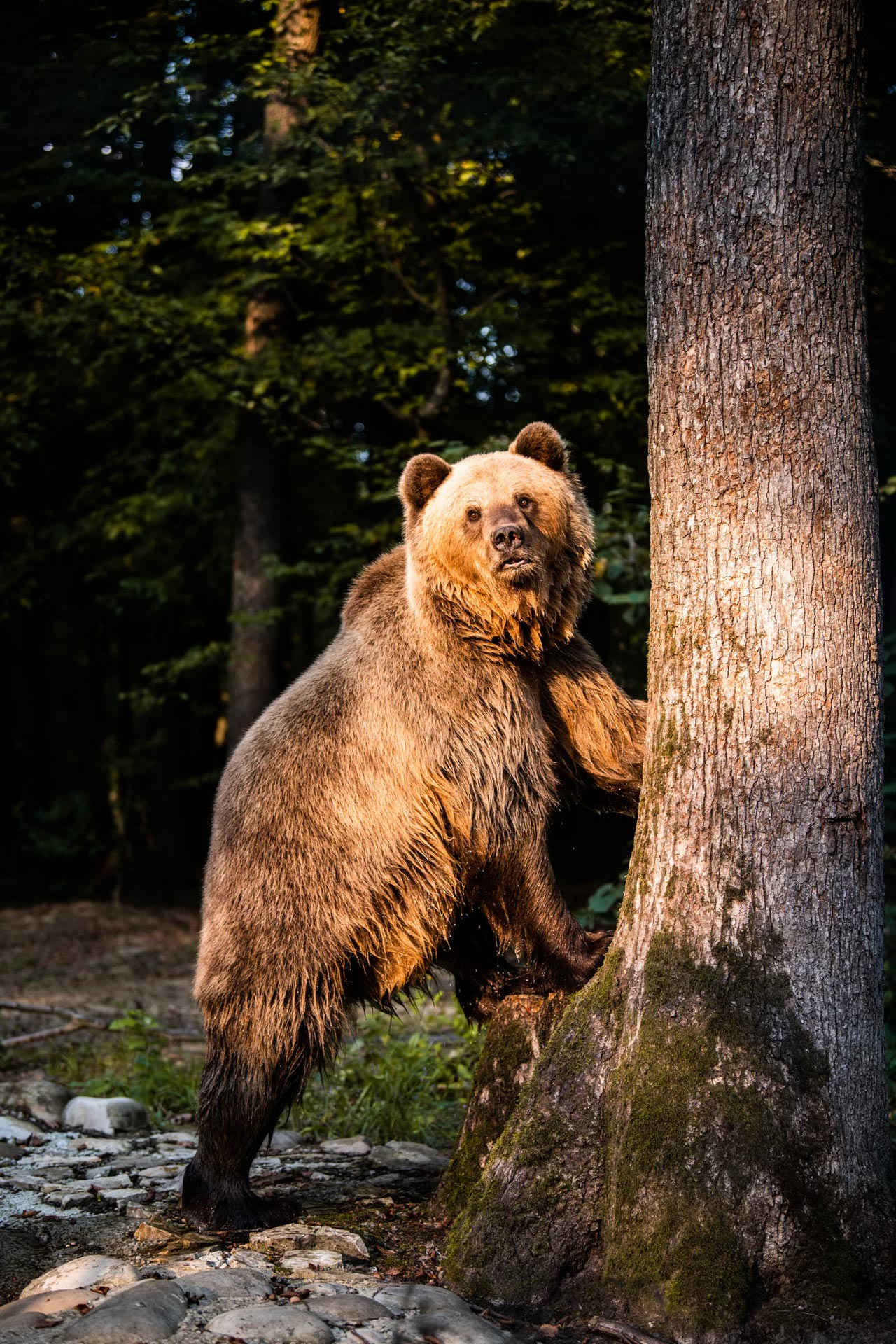
At this moment there are 9 animals under wildlife rehabilitation in “Domazhyr”. The settlement was launched last July, and Potap became the first nursling. Thanks to activists, we found out that there is a cage with a bear in the park, not far from the restaurant. His former owner just left the bear like this after starting a business in Poland. Shortly after Taison, Mashutka, Mania and others have joined him:
— Taison was taken from a hunting station near Kolomyia, Mashutka lived in a cramped cage, she was used for hunting dog training. Both bears were extremely exhausted, and now it is interesting to observe them gaining weight.

All the animals we took to the shelter did not have appropriate living conditions, nutrition in particular. However, now the situation is different:
— Eighty per cent of their diet consists of vegetarian food, such as fruits, vegetables, pumpkins, apples, plums, peaches, oranges. They like to eat fish a lot, we feed them with fowl, although they do not get a lot of sweets. If we give them bread it should be just dark. A lot of animals here have some dental problems. We still hope they will go into hibernation this winter. They were not able to do that before as a result of malnutrition and poor living conditions.
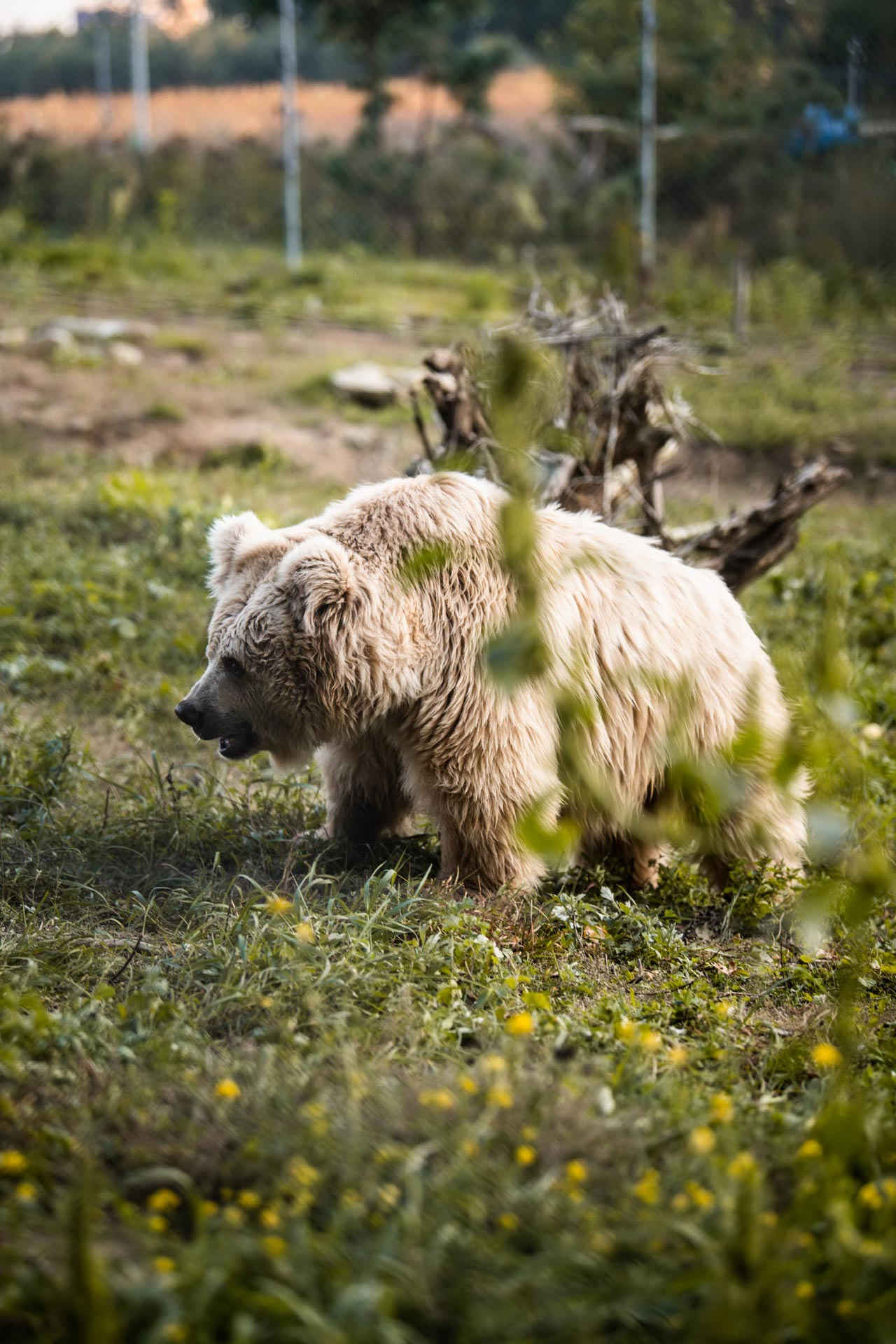
Salvation and prospects for bears
“Domazhyr” animal defenders monitor the situation with bears throughout Ukraine. They have the list of 40 animals held in captivity which potentially are in need of sanctuary. Unfortunately, it is impossible to help all of them at once. According to the standards, bears should be held on the territory not less than half a hectare. Moreover, each animal should have its own room (box), where it can hide in case of unfavourable conditions. It requires considerable investments. Those animals who have suffered the most are in a priority for settlement.
Bears are transferred from its owners to rehab centres as a result of negotiation when owners are being convinced to hand an animal over voluntarily. Otherwise, the problem is being solved under the mediation of the ecological instances and court. According to Ukrainian legislation, it is the only possible way of taking the animal away from an unscrupulous owner. That’s how Khrystyna (female bear, representative of a special Tian Shan brown bear subspecies) got to “Domazhyr”:
— She is a pretty old bear, being used in a circus. She was travelling from a city to a city with performances. Her former owner obviously did not want to lose such a profit. He held Khrystyna in a mini-bus with a 1х1.5 meter cage. Fortunately, with the help of activists, the situation has changed.
Then the team of professionals from Zoology Institute of Berlin came and helped “Domazhyr” animals defenders. Ihor pays our attention to the lack of specialists who can look after wild animals and shares his plans to build a big educational centre of wild nature.
In order to transfer an animal, it is tranquillized at first and then undergoes a veterinary examination. With that aim, an ultrasound diagnostics, blood test, and teeth condition check are performed with modern specialized equipment. Afterwards, a bear is being placed in a cage, woken up and transported. During the first day, it is getting used to a new place and finally, we set it free in a spacious forest enclosure. The centre’s team attentively watches the first steps of animals in the new environment adjusted for them.
Animals live out the rest of their days in the humane conditions. The average lifespan of a brown bear is 30 years. Those who stay in “Domazhyr” are only 5-6 years old, being in the prime of their strength and energy. However, they are not capable of reproduction due to the sterilization policy of the fund. Ihor explains:
— Normally species are teaching their cubs for 2-3 years, and they are ready to live on their own. Still, our bears are not able to bring their babies up in the wild, because they have simply lost their own survival skills. There is an acorn drop now, and if you throw them to a bear by the grid, it will eat the acorns, but it will never pick them up by itself. It means that the bear depends on people.
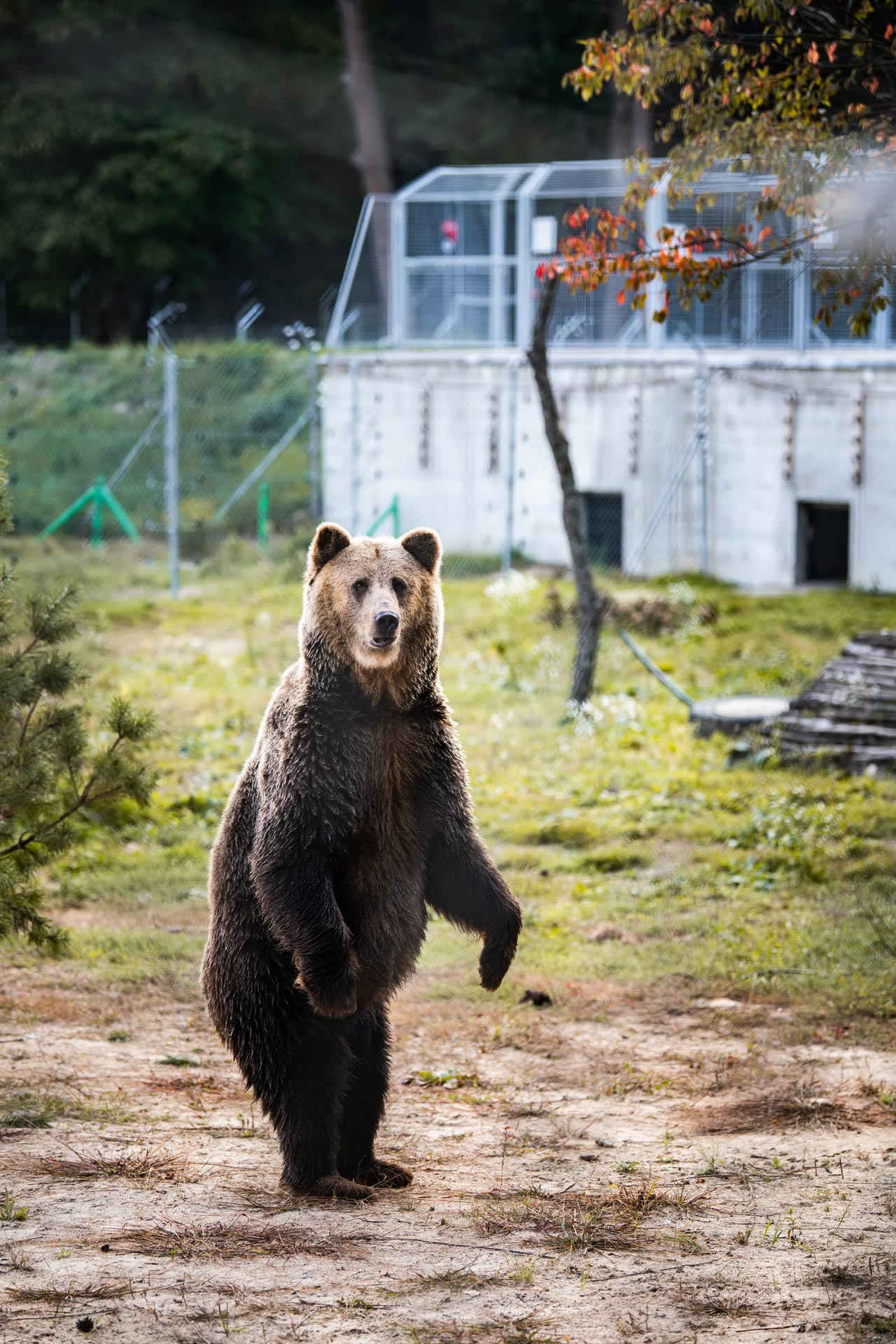
To save situation
“Domazhyr” is going to be enlarged to two big forest aviaries, which makes it possible to rescue 5-6 animals more. Ihor points out that it is difficult to act alone:
— In order to solve all the problems, we need a comprehensive governmental programme. Lately, there has been some progress in terms of lawmaking with a demand for better conditions to keep wild animals. I would even like to say some good words towards the Ministry of Ecology and Natural Resources of Ukraine for paying attention to this problem.
In Ukraine, wild bears live in the Carpathians, nearby Romanian border. In particular, the biggest population is considered to be southward to Rakhiv. Few dozens inhabit Skole Beskids (mountain range in Western Ukraine). Such a low number of animals proves the necessity to protect them.
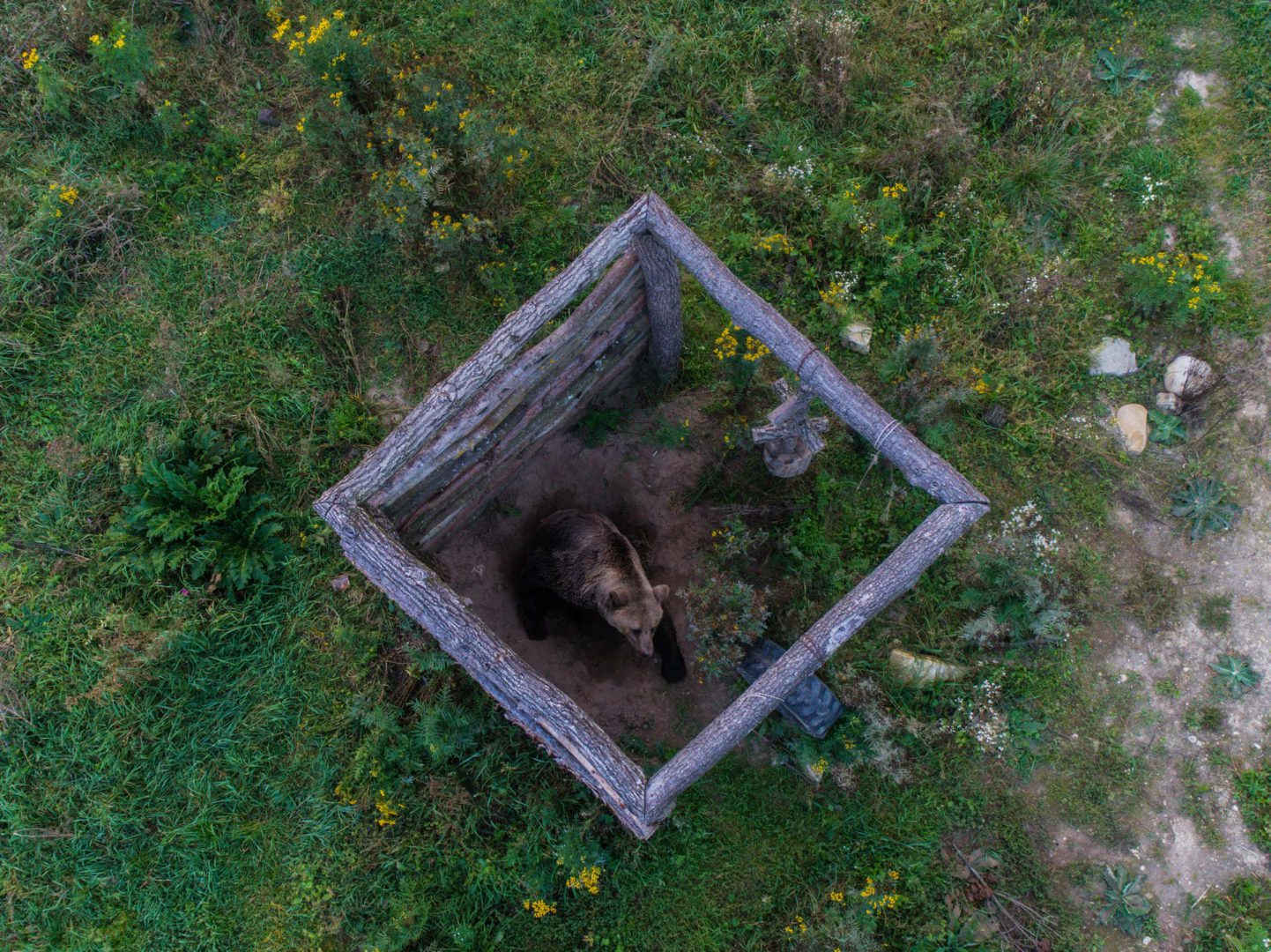
“Domazhyr” is not the only bear shelter in Ukraine. There is the “Brown Bear Rehabilitation Centre” near the Synevyr lake, established under the aegis of the Ministry of Ecology. Also, there are a few bears in the national park of Halych, transported from Kherson region. There is one more small centre in Berezivka near Zhytomyr supported by the “White Rock” fund. Ihor gladly tells us:
— It is great to know that we are not alone: more shelters mean more opportunities to solve the problem. Human interference in nature is destructive. The sooner people realize it, the better the chances to increase the population of wild animals living in the natural environment are.

